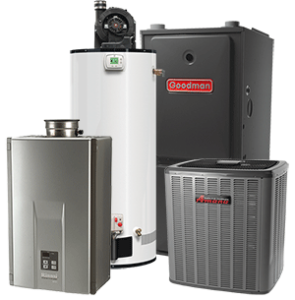Heating and Cooling Loads to be Factored into Your HVAC Installation
If you are a new homeowner or an existing one who is replacing or upgrading their HVAC system, it is important to understand the role of heating and cooling loads when planning your HVAC installation. Simply put, understanding the different loads will help you in accurately sizing your HVAC equipment.
Before discussing any further the concept of cooling and heating loads, it is important to clear the air on two very critical, but often confused terms; capacity and load. Capacity is the output of a certain unit of HVAC equipment. On the other hand, load refers to the amount of cooling and heating output required in order to keep your home comfortable. Now that this is clarified, as the homeowner, there are three types of loads that you should take into account during HVAC planning.
Design Load
This is calculated by your HVAC contractor by inputting information about your home into a computer software known as Manual J which then calculates the correct equipment size including the R-value of the required insulation as well as its orientation.
On top of this, the design conditions are also entered into the software which mainly include the seasonal temperatures both outdoor and indoor. The design load which is the HVAC unit output is then arrived at based on these local design conditions. The truth is your home may not probably meet these conditions most of the times, but they provide an incredible guideline to use in sizing our equipment.
Extreme Load
Although Florida has a tropical climate, winter temperatures can be extremely low. Summers are hot and humid reaching to as high as 84°F. These temperature variations are what constitute the extreme load condition your HVAC equipment may have to contend with. If prior to installation the HVAC equipment output was calculated with these extremes in mind, you may end up having an oversized and inefficient HVAC system.
What Manual J software does is, it adds 15 to 20% of the design conditions with an aim to keep your home comfortable during times of extreme temperatures. In order to boost your comfort and lessen the load of the HVAC system, it is important to insulate your home and properly seal it to stop any instances of air leakage.
Part Load
While capacity of HVAC unit is an important consideration, you may not need its full capacity 99% of the time. This is because the outdoor temperatures do not always meet the design conditions hence making the unit to operate at part load. Because HVAC equipment has a fixed output, chances are high that you may experience temperature variations as well as poor humidity control during times when the system is running under part load conditions.
In order to solve these issues, you can upgrade your unit to a variable speed system or install a dehumidifier.


Comments
Heating and Cooling Loads to be Factored into Your HVAC Installation — No Comments
HTML tags allowed in your comment: <a href="" title=""> <abbr title=""> <acronym title=""> <b> <blockquote cite=""> <cite> <code> <del datetime=""> <em> <i> <q cite=""> <s> <strike> <strong>